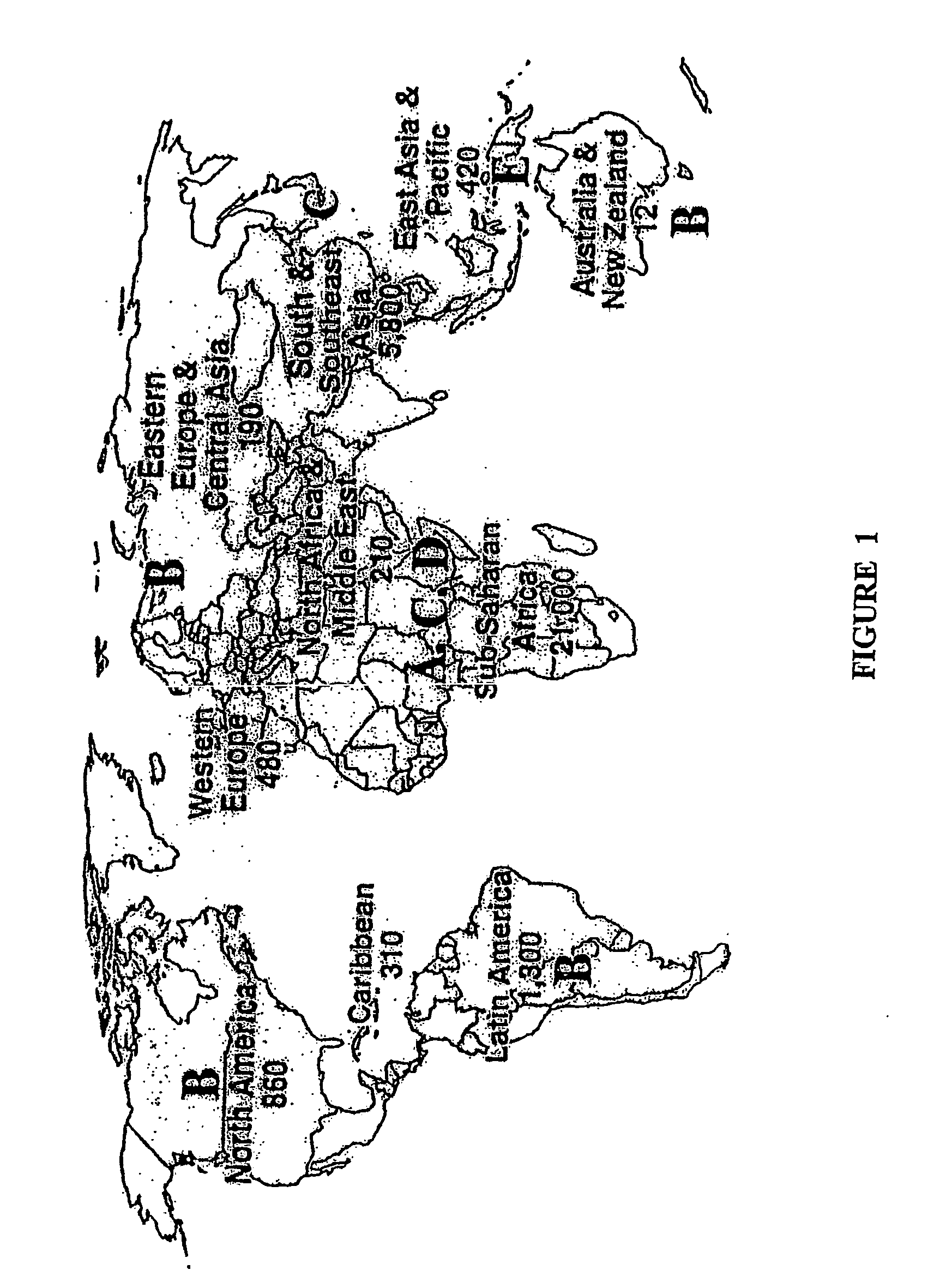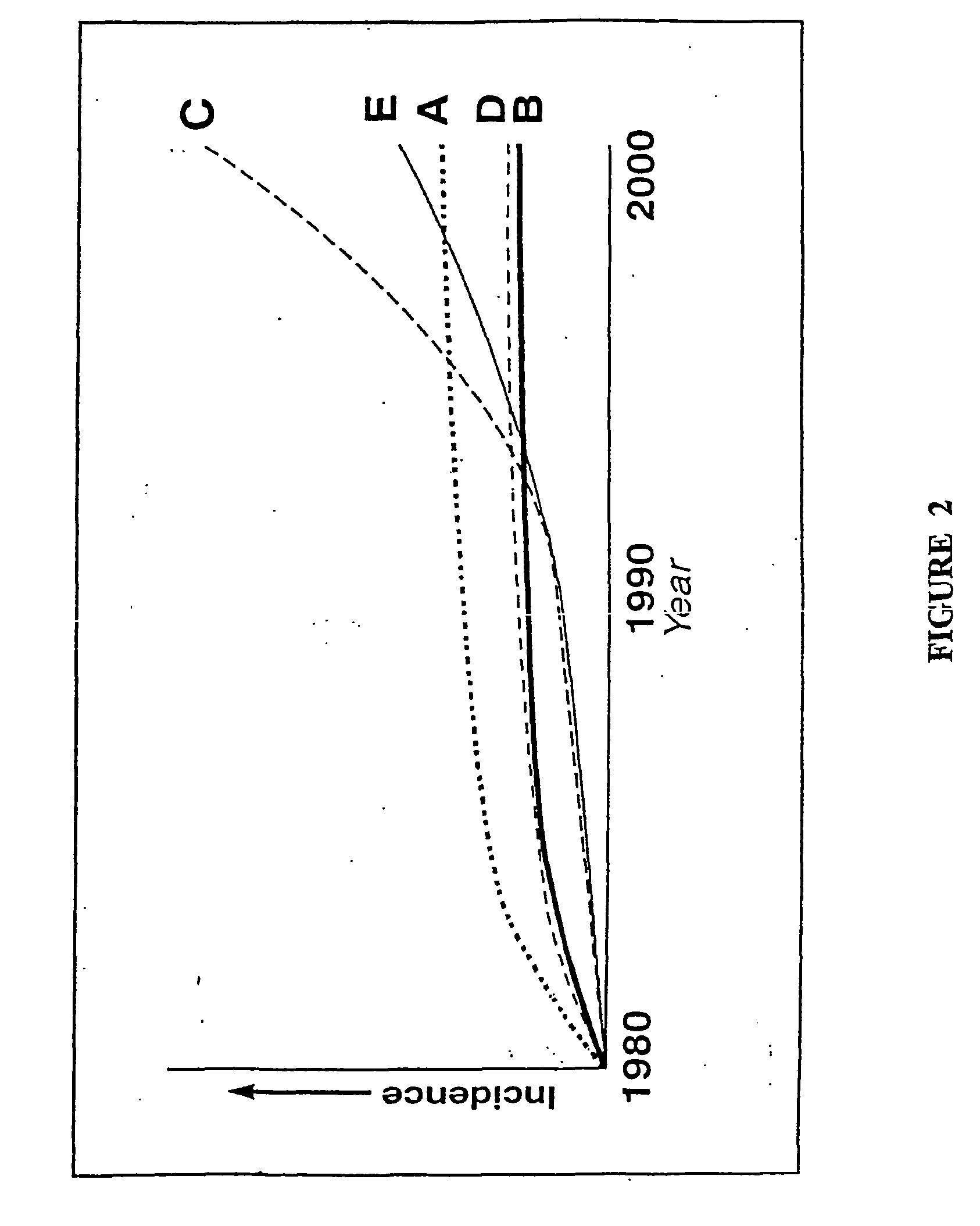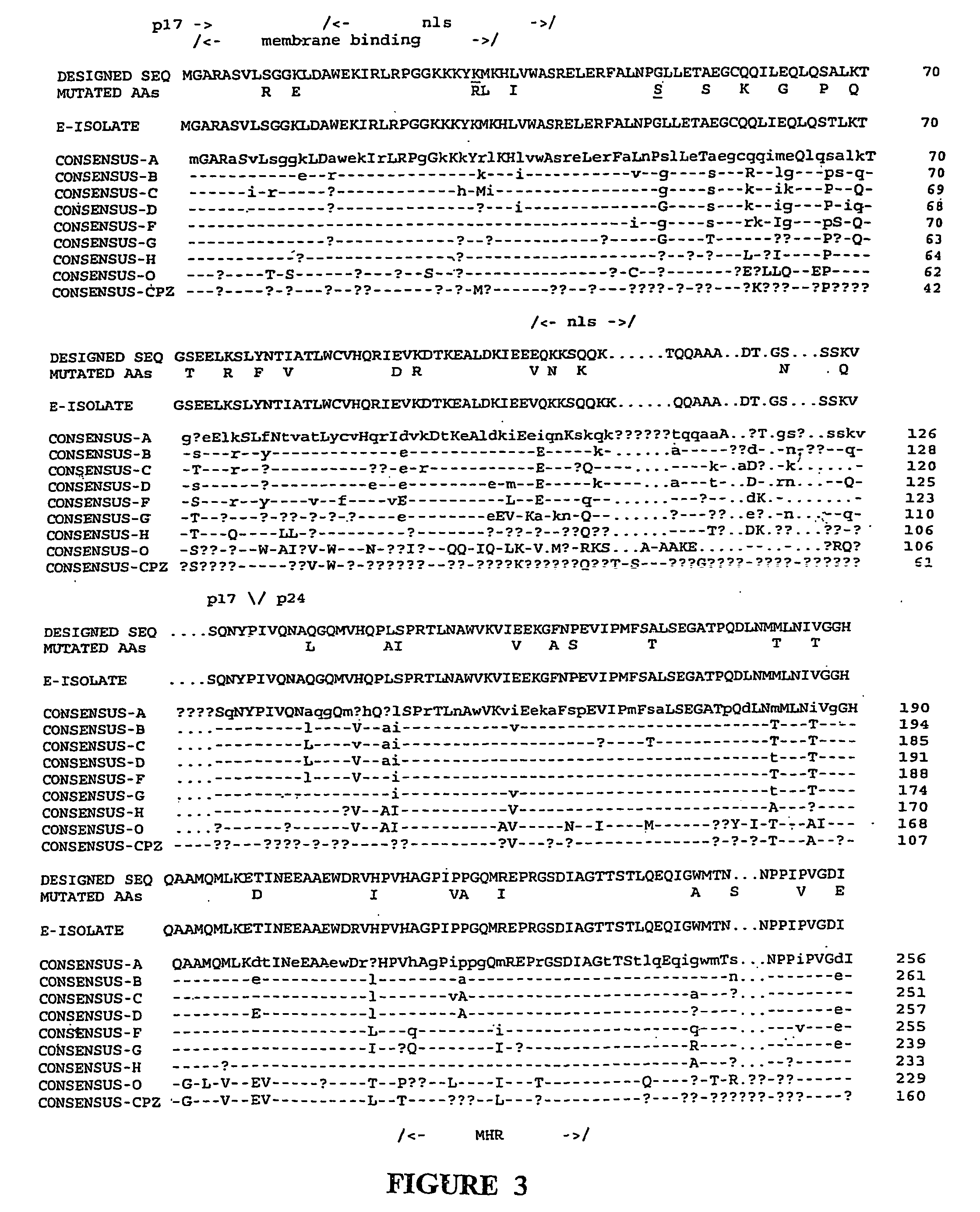Synthetic peptides and uses therefore
a synthetic polypeptide and peptide technology, applied in the field of synthetic polypeptides, can solve the problems of poor performance of this approach, and achieve the effect of reducing propensity and high translation efficiency
- Summary
- Abstract
- Description
- Claims
- Application Information
AI Technical Summary
Benefits of technology
Problems solved by technology
Method used
Image
Examples
example 1
Preparation of an HIV Savine
Experimental Protocol
[0197] Plasmids
[0198] The plasmid pDNAVacc is ampicillin resistant and contains an expression cassette comprising a CMV promoter and enhancer, a synthetic intron, a multiple cloning site (MCS) and a SV40poly A signal sequence (Thomson et al., 1998). The plasmid pTK7.5 and contains a selection cassette, a pox virus 7.5 early / late promoter and a MCS flanked on either side by Vaccinia virus TK gene sequences.
[0199] Recombinant Vaccinia Viruses
[0200] Recombinant Vaccinia viruses expressing the gag, env (IIB) and pol (LAI) genes of HIV-1 were used as previously described and denoted VV-GAG, VV-POL, VV-ENV (Woodberry et al., 1999; Kent et al., 1998).
[0201] Marker Rescue Recombination
[0202] Recombinant Vaccinia viruses containing Savine constructs were generated by marker rescue recombination, using protocols described previously (Boyle et al., 1985). Plaque purified viruses were tested for the TK phenotype and for the appropriate genome arr...
example 2
Hepatitis C Savine
[0231] Synthetic immunomodulatory molecules have also been designed for treating Hepatitis C. In one example, the algorithm of FIG. 25 was applied to a consensus polyprotein sequence of Hepatitis C1a to facilitate its segmentation into overlapping segments (30 aa segments overlapping by 15aa), the rearrangement of these segments into a scrambled order and the output of Savine nucleic acid and amino acid sequences, as shown in FIG. 26. Exemplary DNA cassettes (A, B and C) are also shown in FIG. 26, which contain suitable restriction enzyme sites at their ends to facilitate their joining into a single expressible open reading frame.
example 3
Melanonia Savine
[0232] The algorithm of FIG. 25 was also applied to melanocyte differentiation antigens (gp100, MART, TRP-1, Tyros, Trp-2, MC1R, MUC1F and MUC1R) and to melanoma specific antigens (BAGE, GAGE-1, gp100In4, MAGE-1, MAGE-3, PRAME, TRP2IN2, NYNSO1a, NYNSO1b and LAGE1), as shown in FIG. 27, to provide separate Savine nucleic acid and amino acid sequences for treating or preventing melanoma.
PUM
| Property | Measurement | Unit |
|---|---|---|
| volume | aaaaa | aaaaa |
| size | aaaaa | aaaaa |
| nucleic acid sequence | aaaaa | aaaaa |
Abstract
Description
Claims
Application Information
 Login to View More
Login to View More - R&D
- Intellectual Property
- Life Sciences
- Materials
- Tech Scout
- Unparalleled Data Quality
- Higher Quality Content
- 60% Fewer Hallucinations
Browse by: Latest US Patents, China's latest patents, Technical Efficacy Thesaurus, Application Domain, Technology Topic, Popular Technical Reports.
© 2025 PatSnap. All rights reserved.Legal|Privacy policy|Modern Slavery Act Transparency Statement|Sitemap|About US| Contact US: help@patsnap.com



